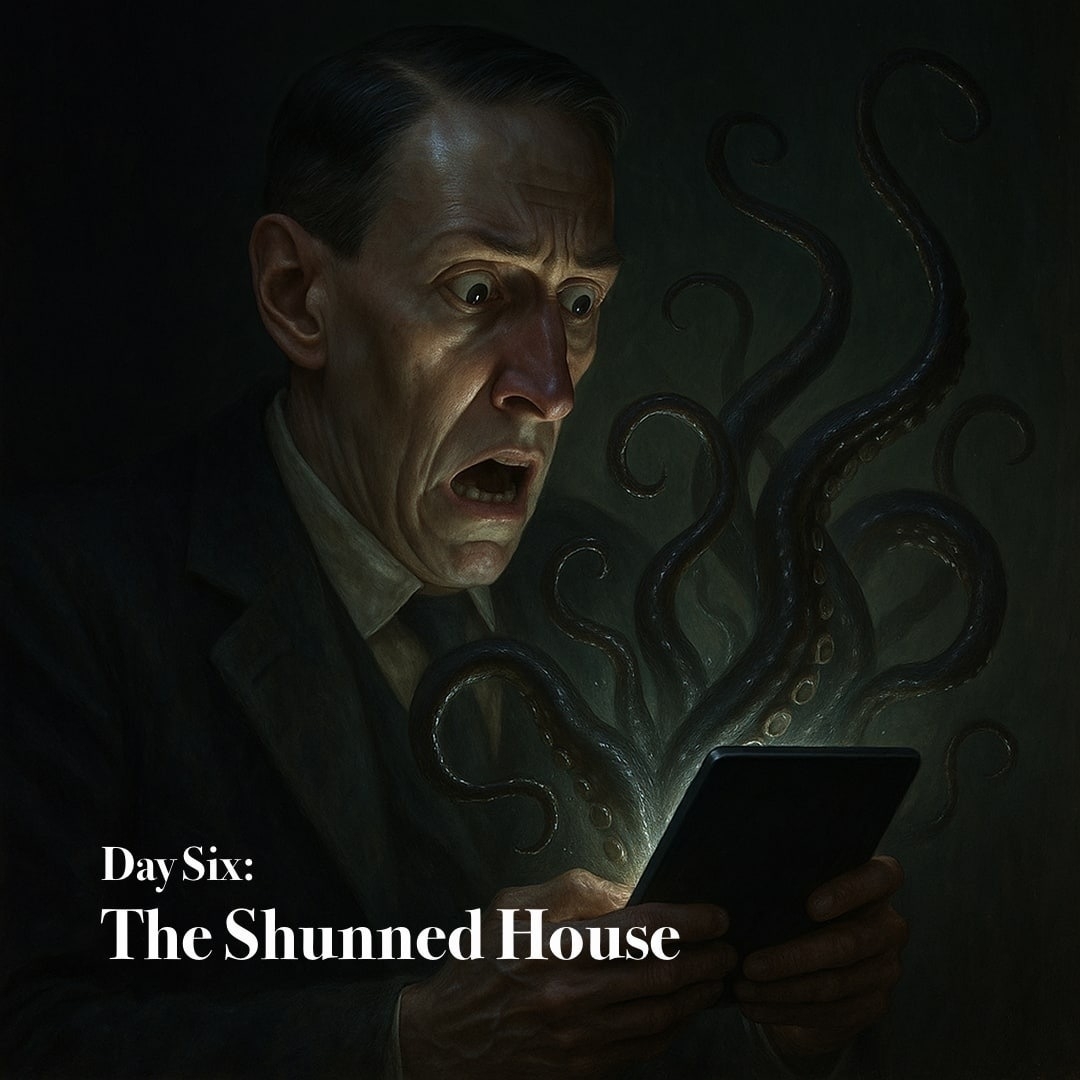The Shunned House

I have perused the accursed chronicles of H. P. Lovecraft innumerable times, yet for all my familiarity with his dread imaginings, I cannot, in sober truth, recall ever encountering that curious narrative entitled “The Shunned House.” Doubtless I have read it Aye, in some forgotten hour beneath a guttering lamp, but if so, it has slipped from memory as dreams fade before the dawn. Perhaps this is no fault of my own, for the tale, though steeped in miasmic suggestion, lacks the hideous potency of the Dread Master’s most blasphemous works.
And yet, I tremble to confess it, I sense that its malignant spores took root nonetheless in the mind of another visionary: Grant Morrison. In The Invisibles, the transmogrification of John-A-Dreams into a sentient fungus, glimpsed through a thousand disjointed masks of identity, reeks unmistakably of that Providence house where corruption seeped upward from the very earth.
Let us, then, descend into the text itself. Into those damp and haunted chambers, where the walls breathe and the floor remembers. Let us begin today’s reading.
In that ill-starred dwelling upon Benefit Street, our narrator and his venerable uncle, Dr. Elihu Whipple, pursued a mystery steeped in death and miasma. The house, long cursed by noisome odors and phosphorescent growths, concealed beneath its rotting timbers an evil not born of man. In the cellar, amidst vapors yellow and corpse-like imprints upon the earth, they glimpsed visions of the doomed Harris lineage. At the midnight hour there came a shrieking light, hateful and many-eyed, and Dr. Whipple, seized by nameless powers, assumed a monstrous form before dissolving into a legion of the house’s spectral victims.
Haunted yet resolute, the narrator sought to end the blight. Beneath the cellar floor he uncovered a translucent tube of unimaginable girth, the very limb of some titanic horror slumbering beneath Providence. With barrels of acid he seared the thing until the fungi turned to ash. Though he mourned his uncle, he took grim solace that the abomination lay dead, and the house in time appeared ordinary once more.
Of the tale itself, its history is as curious as its subject. Printed in 1928 by W. Paul Cook, “The Shunned House” lay unbound for decades. In 1959 Arkham House came into possession of one hundred fifty sets, of which fifty were sold unbound, while the remainder August Derleth bound in 1961 without jacket, marked only upon the spine. Those rare volumes, watermarked “Canterbury,” now stand as the most coveted relic of Arkham House, though forgeries abound, bearing the false “Chantry” mark or crimson boards. For the collector, it is a veritable grail, a cursed treasure from the very heart of Lovecraft’s mythic legacy.